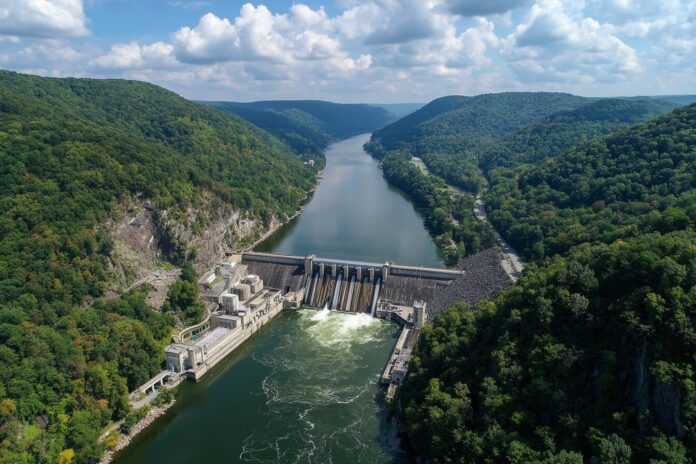Setting a New Benchmark in Corporate Renewable Energy
Google has taken a bold, strategic step toward achieving its carbon-free future by signing a groundbreaking $3 billion agreement with Brookfield, a leader in renewable energy. This historic deal, one of the largest framework agreements for the purchase of hydroelectricity worldwide, underlines Google’s commitment to leveraging mature renewable energy assets for comprehensive and sustainable power procurement.
Most importantly, the agreement not only signifies a shift toward a greener energy mix but also emphasizes the importance of long-term investments in clean technology. Because this partnership enhances energy reliability and adaptability, industry observers have hailed it as a transformative move that sets new standards in corporate renewable energy strategies.
Understanding the Scope of the Deal
The agreement permits Google to procure up to 3,000 MW of hydroelectric energy from various Brookfield assets located throughout the United States. Initially, the focus is on two key projects: the Holtwood and Safe Harbor dams in Pennsylvania, which alone secure 670 MW of clean power. These initial contracts, valued at over $3 billion, represent only the beginning of a robust plan to modernize and optimize America’s aging hydro infrastructure.
Besides the significant energy procurement, the deal incorporates provisions to invest in upgrading and relicensing existing hydro assets. This forward-thinking approach ensures reliability and sustainability for the energy grid, while simultaneously reducing environmental impacts. For more details on the framework and its implications, you may review the report on Axios.
Why Hydropower is the Ideal Choice
Hydropower presents unique advantages, especially in fulfilling the growing energy demands of modern technology companies. Because AI hyperscalers and data centers require dispatchable and reliable energy sources, hydropower provides a steady and predictable supply. This reliability is crucial since intermittent renewable sources such as solar and wind can sometimes fall short during high demand periods.
Furthermore, established hydro plants bypass many of the lengthy and complex permitting processes that new build projects face. Therefore, by modernizing existing infrastructure, Google can secure low-impact, homegrown, clean power while reducing its carbon footprint. For an in-depth look at the technical aspects of such renewable investments, consider exploring insights provided by Clean Energy Stocks.
Impacts on Sustainability and Grid Reliability
The strategic partnership directly supports Google’s ambitious goal to operate on 24/7 carbon-free energy across its global data centers and campuses. Consequently, hydropower not only stabilizes the grid by balancing intermittent renewables, but it also enables a more resilient power infrastructure that can adapt to increasing digital demands.
Because the energy from these hydro projects is both dispatchable and sustainable, Google can confidently transition to a fully green energy portfolio. This is especially significant in today’s climate, where every efficient, mature renewable resource counts towards reducing global emissions. More information on how these dynamics are playing out in the clean energy market can be found in the detailed brief by Financial Post.
Strategic Importance in the Broader Clean Energy Market
Brookfield stands as a frontrunner in renewable energy, particularly with nearly 8 GW of hydro assets within the United States. Therefore, this alliance with Google highlights the immense value of investing in and modernizing traditional energy infrastructure. The approach not only reduces waste but also revitalizes existing facilities, ensuring continuity in clean energy delivery.
Because other tech giants, such as Microsoft, have embarked on similar initiatives, this deal underscores a broader industry trend towards strategic investments in sustainable energy sources. In addition, this collaborative model may pave the way for expanded renewables integration, which has been discussed extensively in recent analyses by The Energy Report and GlobeNewsWire.
Looking Ahead: The Road to a Carbon-Free Future
The Hydro Framework Agreement not only provides a flexible structure for accessing clean power but also opens the door to further expansion as new opportunities emerge across different U.S. regions. Because Google continuously scales its operations and data centers, the ability to tap into additional renewable assets is paramount. Besides that, this proactive stance ensures that Google remains at the forefront of sustainable energy consumption.
Therefore, this landmark deal sends a resounding message: mature renewable assets, when upgraded and optimized, are key enablers in powering the digital economy. With such strategic investments, Google reinforces its position as a leader in the global transition to sustainable energy, confirming that technological advancement and environmental stewardship can indeed go hand-in-hand.
References and Further Reading
To learn more about this transformative deal and its broader implications for clean energy investment, readers may consult various trusted sources. For a detailed breakdown of the partnership specifics, visit the Axios Pro article and the Financial Post report.
Additionally, more insights into the renewable energy sector can be drawn from industry research available at The Energy Report and Globe Newswire. These resources further contextualize Google’s efforts in the pursuit of a cleaner, more sustainable future.



